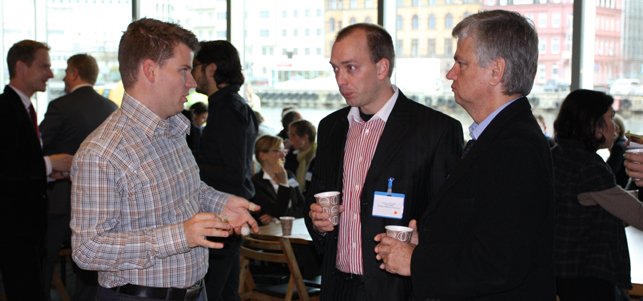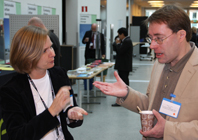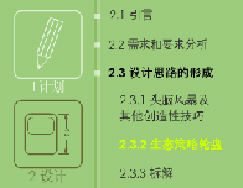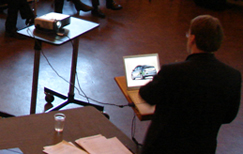We talk to Martin Charter, director of The Centre for Sustainable Design, about the Centre’s history, issues and trends in sustainable innovation and its forthcoming conference 
The vast majority of large organisations have had formal sustainability strategies in place for some time. This has meant that the discussion around sustainability has shifted from ‘why to do’ sustainable innovation to ‘how to’ make it happen.

But what about SMEs and smaller companies who don’t have the same resources and in-house knowledge available to them but realise they need to do something?
According to Martin Charter, director of The Centre for Sustainable Design (CfSD), product designers and engineers don’t necessarily want to be specialists in sustainability but need to have the right tools and processes available to them in order to make more sustainable decisions in the design and development process.
“There is a need for a portfolio of tools depending on the complexity of the analysis needed, particularly for the non-specialist. They need to be more simple, but not simplistic tools,” explains Charter.
Charter knows a thing or two about sustainable design. He wrote the ‘Managing Eco-design’ manual in 1996 focused on business aspects of eco-design to help solve the lack of guidance available at the time. This is something that continues in his work today and he’s currently chairing the ISO: 14006 document that brings exactly that type of advice and guidance into an ISO certified standard.
Helping hand
Established in Farnham, UK, in 1995 the CfSD has organised over 100 conferences and workshops, and undertaken a wide range of research and training projects on eco-product development and sustainable product design. Apart from its work with the large OEMs and multinationals, a core focus of the Centre has been to work with SME’s and consultancies on sustainable innovation and design.
“We work with businesses on policy and with our research partners we’ve been involved in all manner of European research projects. We’ve also been involved in training in Europe, the States and all across Asia,” says Charter.
Charter’s movement into the field started in the late 1980s when he worked in a range of roles in industry looking at sustainability. “What I brought to the Centre is a better understanding of business and how you manage the issues within product development. The approach we take at the Centre is to identify product designers and engineers that could work and collaborate with us.”
“When we started, CfSD was centred on design engineering rather than product design issues. We were talking about how you remove lead or lead cadmium from the guts of a new product or a redesign. So, incorporating sustainability at the concept stage,” he adds.
Charter also set up CfSD’s first Sustainable Innovation conference back in 1995. He identified a gap in the market for an event that would focus on sustainable design and so decided to add value in that way. “Obviously it was an opportunity for us to have an event as a promotional tool, but it would also provide a platform to raise awareness of sustainability issues and what companies are doing,” comments Charter.
The conference has evolved over the years and this October sees the 16th being staged – Sustainable Innovation 11: ‘State of the Art’ in Sustainable Innovation & Design. Held from 24th to 25th October 2011 in the impressive location of Farnham Castle, the conference provides a platform to discuss the opportunities and challenges related to sustainable innovation, technology, product and service design and development. “One of the things I did in 2003 was rebrand the conference away from design and focus on innovation more broadly. The ideas of commercialisation with design as a key part of that process,” says Charter.
Beyond compliance
Having worked in the sustainability industry for some time, Charter has obviously seen how it has developed and the changes that have occurred. Compliance was initially a key sustainability driver but it seems larger corporations are beyond that now. As Charter explains, advanced companies like Philips started working on eco-design or Design for the Environment after the Earth Summit in 1992. “Thirty per cent of Philips’ overall revenue now comes from its green flagship products,” he says.
“They’ve got something called the Six Focal Areas of Eco-Design that they bring in right at the beginning of any new product or redesign of any product. That’s really talking about opportunities to a) reduce materials through out the lifecycle, b) reduce the energy consumption, c) how to reduce packaging through out the lifecycle, either that the point of sale or distribution, or d) increase longevity in design, e) constitution of materials, and f) increase recyclability,” adds Charter.
Philips, like a growing number of other big players, want to get ahead of legislation but the first issue is always a question of how to get compliance in place either through direct control over their factories or through contract manufacturers and supply chain. As Charter explains, a recent training project CfSD did with a household name multinational provides a good indication of where things are heading.
“The company’s first challenge was environmental compliance of the 800 new products launched each year,” says Charter. “That’s key before they started to look at sustainable innovation and how they use it to stimulate new products and technology ideas.”
“A lot of the companies are moving from factory and supplier compliance (so what they do with waste and such) into the next phase of how these issues (materials adoption, energy adoption, materials recyclability) impacts their products,” he explains.
A key issue in modern manufacturing is the link between eco-design and supply chains. CfSD led the Asia Eco-Design Electronics (AEDE) project, which brings eco-design training and tools to the Chinese, Indian and Thai electronics sector that are required to meet increasingly stringent legal and customer requirements related to environmental and social issues from the EU, Japan and the US.
Another shift Charter has witnessed is that larger companies are starting to develop focal areas depending on the products they produce. For instance, a key focus for Procter & Gamble, which produce FMCG (fast moving consumer goods) products and subsequently an enormous amount of packaging, is on water use.
For beginners
However, apart from its work with these larger companies, a core focus for the CfSD is SMEs. Without the same legislative pressures, the issue for these smaller companies is how and where to start. According to Charter, many product designers or engineers in such companies would benefit from simple tools and processes that would better educate them in sustainable design. “This is what we look at in our training, particularly some of the simple approaches people can use, using checklists and other methodologies just to start the thinking,” says Charter.
Training is one of CfSD core services. Programmes concentrating on sustainability focused innovation, product development and marketing which have been organised worldwide for major corporations
Charter also feels that there are big implications for the education community.
“The engineering education departments should be educating students on these issues,” he argues. “But at the moment it’s quite sporadic. You see some universities doing it (particularly less so in this country), but it tends to be a few players where they’re thinking about integrating it into curriculum though often it depends on motivated lecturers that do a module or a short course.”
On the Agenda
The Sustainable Innovation conference taking place in October will provide a great opportunity to learn, network and discuss. It features presentations from international businesses, government and academia with the 24th October chaired by David Eades, presenter of BBC World News, and the 25th October by Lawrence Bloom, chairman of B.e Energy, UK/Canada. Delegates can also decide whether to attend just one or both days.
“The first day will focus on practicalities of how you integrate environmental aspects into product design and innovation and the lessons learned. The second day will be looking at the issues of choosing tools and the lessons learned from the process. We’ll have Autodesk and Granta Design, for example,” says Charter.
As a final note, the ISO: 14006 standard will be published in September. With the title, ‘Environmental management systems – Guidelines for incorporating ecodesign’, it aims to provide guidance on how companies can integrate eco-design into environmental management and quality management systems. With it becoming official shortly before the Sustainable Innovation conference, the event will provide an opportunity to discuss it with a group of experts and leaders in the field. The CfSD will also, of course, be launching training in that area.
www.cfsd.org.uk
A preview of the Sustainable Innovation 2011 conference
No
Default









